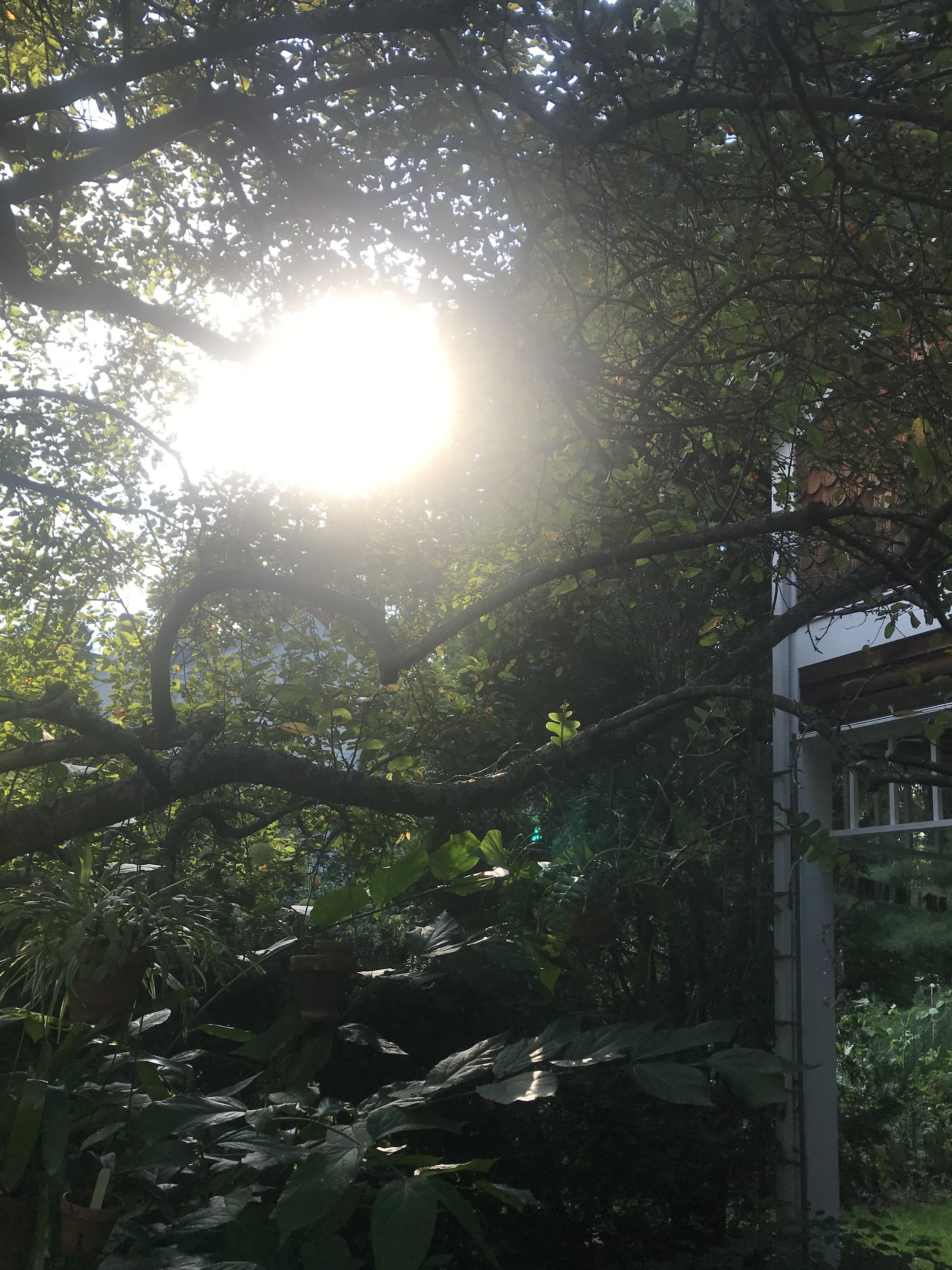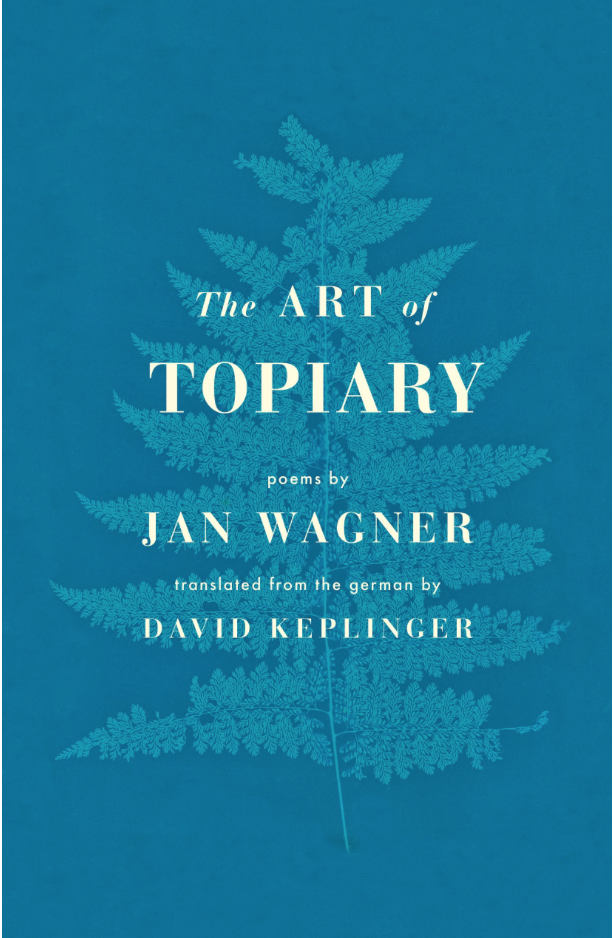
THE ART OF TOPIARY:
THE SELECTED POETRY OF JAN WAGNER (2017)
The Atlantic, "The Best Books We Read in 2017"
This collection of collaborative translations between the German poet Jan Wagner and the American poet David Keplinger bring into English the best material of Wagner's 20 year career, recently honored with the Büchner Prize in his native Germany. It was published in October, 2017 by Milkweed Editions.
The Art of Topiary is a poetry collection of indescribable wonder.” The Atlantic
Pleaides, "Editors Picks for Best Books of 2017"
"David Keplinger’s translations of Jan Wagner, a German poet we should all get to know, embody a deeply thoughtful relationship between poet and poet-translator, and the result is marvelous poems that are now stunning in English." Pleiades
Rain Taxi: A review of The Art of Topiary
"[The Art of Topiary] collects thresholds." Allison Campbell in Rain Taxi
The Kenyon Review: A review of The Art of Topiary
“David Keplinger’s translation is, perhaps, the most empathetic presence in the book. His movement from German to English is an inhabiting of Wagner’s language, a true feeling-with. Keplinger’s translation embodies the scale and scope of Wagner’s poems. ‘rhino,’ the first poem, opens with an invocation: ‘come closer.’ Keplinger, as close to the language—and Wagner’s interiority—as possible, makes no promise of proximity. Instead, the reader is met with the “impermeable.’” —The Kenyon Review
An interview with Jan and David conducted at the Goethe Institute, New York City, on November 18, 2017, is here
elk
the warm double-barrel like an art-
ery in my fist. a sudden blast
and it’s already over, while still from forest
to forest the beacon of the echo blazes outward.
gathered around me, the mute round
of uncles stand up: the beards, wrung
with pearls of ice within them; beneath mount-
ains covered in snow, water is streaming.
around the foothill’s hunchback we follow the blood .
sick to my stomach, a very late light –
then his antlers clenching at the air
like the champion’s hands at the prize cup.
elegy for knievel
God take care of me, here I come...
wherever it saw him, the land began to blur.
this daredevil, this hotshot,
his shirt full of stars
and ever pursued by the hornet swarm
of engine noise. the bones broke,
the bones coalesced, and he jumped.
how many obstacles between the ramp
and that distant point?
how many discarded double deckers?
what doubts did he have, the kind that sink
to the interior, until a whole canyon gapes
with trickling sand at its edges
and the cries of huge birds?
afternoons, when history
fell still for a moment,
fragrant as popcorn and exhaust.
like here, in yakima, washington,
this dented moon above the stadium
and the thousands whose breath is caught:
fifteen, twenty buses, and his wheel
in the air.
koi
in the primeval soup of lakes, behind the gables
of the palm houses: koi, as they clot,
as they weave into the tapestry of blackness
their golden threads, their orbits more
difficult to predict than comets;
the round mouth that seems to form
nothing but their name, touching the place
where air divides from water; their chamber pitch
too high or too low for our ears,
inaudible: koi, a firmament of coins
on the bottom of the pool, jangling beneath,
loving dimness like only embers can;
next to the promenade they hover, smoulder;
something from their hulking calm,
from their stubborn heartbeat should transfer
upon myself, when i dip my hand into the bilge
and wait for the cold jolt, the rugged gown
of sequins; thereby beginning old age.
From THE KENYON REVIEW:
In The Art of Topiary, Jan Wagner poeticizes his interiority through image and form. Wagner’s poems exist in the hyper-distilled space of perception—of memory, industry, war and natural beauty. These poems are, thus, guarded and graceful, “surrounded by gardens.” One senses his feeling, but rather than reading with empathy, perceives from a distance.
Often, poetic moments nod toward emotion and push on, instead, to the quasi-supernatural. In “wejherowo,” Wagner closes his poem: “from every side of us, the landscape hastened.” One senses Wagner in control, tightly steering—and shaping—the language at hand. In this way, his poems perform the art of topiary: highly contained, almost otherworldly, meant to be seen (not felt) as craft.
Gaston Bachelard’s essay “Miniature” seems to be written in direct response to The Art of Topiary. Bachelard writes, “In this text, nothing stands out, but everything is imagined, and the imaginary miniature is proposed to enclose an imaginary value.” Wagner’s reader, however, sees a “total inversion” when the imagistic scale explodes to gigantic proportion: “while still from forest / to forest the beacon of the echo blazes outward.” His deft oscillations allow a simulation of emotionality, where image and the perception thereof invites awe.
David Keplinger’s translation is, perhaps, the most empathetic presence in the book. His movement from German to English is an inhabiting of Wagner’s language, a true feeling-with. Keplinger’s translation embodies the scale and scope of Wagner’s poems. “rhino,” the first poem, opens with an invocation: “come closer.” Keplinger, as close to the language—and Wagner’s interiority—as possible, makes no promise of proximity. Instead, the reader is met with the “impermeable.” —AMR
